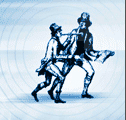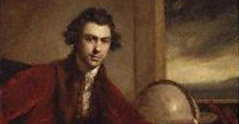|
JAPAN THROUGH WESTERN EYES:
Manuscript Records of Traders, Travellers, Missionaries and Diplomats, 1853-1941
Part 2: Journals and Student Essays
Part 3: Correspondence and Scrapbooks
Part 4: Collected Papers of Brown, Perry and others
Part 5: Writings by Griffis
Scope and Content
The William Elliot Griffis Collection in Rutgers Special Collections and
University Archives includes papers, publications, photographs, ephemera and
artefacts created and collected by William Elliot Griffis, one of the first
foreign employees (yatoi) of the Japanese Government during the second
half of the nineteenth century, and the foremost interpreter of Japanese culture
for the American public from 1876 to the First World War.
Over a fifty-year period spanning the turn of the nineteenth and twentieth
centuries, William Elliot Griffis was well known as a popular author and
lecturer, a 'Japan hand' who was perhaps the foremost American expert on
Japan and the Far East and on American relations with East Asia. A Civil War
veteran and graduate of Rutgers College (1869), Griffis was one of the first of
the yatoi, the foreign employees of the Meiji government: in 1870 he went
to the provincial capital of Fukui, teaching there for a year before moving to
Tokyo, where he taught English and Chemistry for three years at the Kaisai Gakko
(later Tokyo University). In Tokyo, he was joined by his sister Margaret Clark
Griffis, who also worked as a teacher and participated in the modern revolution
of Japanese women's education (and whose papers are also preserved in the
Griffis Collection). After returning to the United States in 1874, Griffis
embarked on a career writing and lecturing on Japan and related subjects. His
1876 volume The Mikado's Empire was for decades the authoritative
reference in the West on Japanese culture and history.
The entire range of his output is represented in the Griffis Collection at
Rutgers. Manuscripts, in various stages of completion, are joined by copious
notes on Griffis's many projects and interests: Japan, its history and
religion; Korea and China; Holland; New York State and American history
(including the 1779 Sullivan Expedition against the Iroquois); important figures
in the history of Japanese-US relations from Millard Fillmore and Matthew
Calbraith Perry to the missionaries Guido Verbeck, James Ballagh, J C Hepburn
and Samuel Robbins Brown; fine and applied arts; folklore; current events and
world affairs; biblical literature; theology and the challenges offered
Christianity by its exposure to the religions and cultures of the East, and so
on.
In addition to the considerable quantity of Griffis's own work, his working
subject files contain remarkable source materials on the various issues in which
he was interested. The materials Griffis gathered, even more abundant and
broad-ranging than those he himself produced, include numerous items rare or
unique to the collection and of great historical interest. Among them, notably,
are not only numbers of very rare printed materials in Japanese - books,
pamphlets, maps - from the late Tokugawa and Meiji periods, but also nearly 350
manuscript essays written in English by Japanese students of Griffis and
Margaret Griffis, on numerous subjects: growing up in pre-Meiji Japan; Japanese
history (including contemporary history); customs; games; theatre; occupations
and crafts; religion, folklore and superstitions. Another valuable asset of the
Griffis papers is their reflection of the popular image of Japan in the American
public as it developed up to the turn of the century and beyond. Furthermore the
papers' extensive documentation of the American popular press (Griffis
carefully saved notices and reviews of his own and others' work), and his
personal contacts with publishers and audiences, offer a close view of
nineteenth century American popular and intellectual culture. As a result of his
work as a public speaker the collection contains many materials in media besides
print, notably photographs and lantern slides.
< Back
|
|















